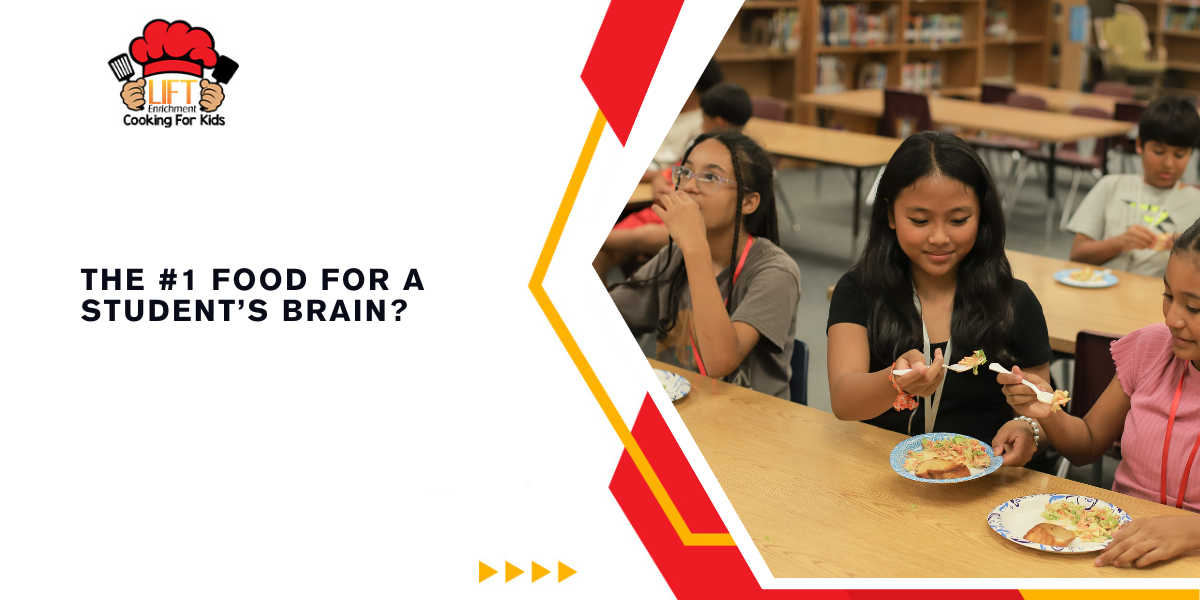If you could only give one nutrient to kids to help them learn better in and outside the classroom, what would it be?
Grass-fed protein? Complex carbs? Anthocyanin extract from organic acai berries cultivated in the rich volcanic soils of Peru?
The answer:
Well, there isn’t one, really.
Trying to find one key nutrient for learning is a bit like asking which piece of your car you need the most for driving. That said, for brain health (particularly the growing brains of our children), some nutrients play a bigger role than others. Despite its importance, one nutrient often goes unnoticed:
Fat.
Why fat is your brain’s best friend
According to Dr. Andrew Huberman, fat is key when it comes to brain health for one simple reason:
The brain is fat.
60% of the brain is made out of fat, and the rest is mostly water. Note: this isn’t the same “fat” people want to lose. What we’re talking about is “structural” fat. To use chemistry jargon, it’s made from lipids, fatty acids, and glycerol. Now, that might sound intriguing to you, but here’s the part to remember:
Brains use fat to build themselves. So, the type of fat that kids eat is what their brains use for building material.
In other words, a diet full of healthy fats (avocados, olive oil, seafood, nuts, grass-fed butter, etc.) is literally the foundation of healthy brains. But the reverse is also true: a diet full of unhealthy fats like those found in processed foods builds a suboptimal brain.
So, fat isn’t bad or something to be scared of. Fat builds our children’s brains. (And our own, too). What we do need to avoid, though, are certain types of fat.
Good fats, bad fats, and brain fog
To understand which fats heal our brains and which fats hurt our brains, we need to talk about two types of fat: Omega 3 and Omega 6. According to people like Dr. Been and a lot of researchers in the “functional nutrition” space, omega-3 tends to be anti-inflammatory, and omega-6 tends to be pro-inflammatory.
What do we mean by “inflammatory”?
Well, to use a simplistic metaphor, imagine your body is a city. Omega 3 would be the builders, and Omega 6 would be the demolition crews. Both are needed, inflammation is how we fight illnesses, but too much omega-6 isn’t good.
Getting back to the classroom: Too much omega-6 = too much inflammation, which studies suggest is one of the causes of brain fog. Students with brain fog, needless to say, don’t learn very much.
The key, then, to good brain health and learning? Eat roughly the same quantity of omega-3 to omega-6.
The challenge, though, is that in the modern world, this is very hard to do, because omega-6 is everywhere. Particularly in processed foods, in the form of seed oils like soybean oil (from 1909 to 1999, our omega 6 to omega 3 ratio increased. A likely culprit? A 1000-fold consumption in soybean oil).
Research suggests that our hunter-gatherer ancestors ate a 1:1 ratio of omega-3 to omega-6. Modern diets? Can be as much as 15:1, or even higher.
The takeaway:
If we want kids’ brains to be the best they can be in school and beyond, a good starting point would be to help them reduce the omega-6 fats in processed foods and replace them with healthier fats found in home-cooked meals.
How can we substitute omega-6 fats with fats that are beneficial to the brain?
So, what are “healthier fats” for brains? Well, start with seafood. Seafood (particularly oily fish) is very rich in omega-3. Salmon, mackerel, anchovies, sardines… shellfish like oysters and mussels are great for omega-3 too.
Author Daniel Coyle explains in his book The Talent Code, myelin – the material our brains produce that allows learning to happen, is made from omega-3 fatty acids! Of course, seafood isn’t the only source of brain-healthy fats.
Things like avocados, walnuts, grass-fed butter, coconut oil, and olive oil are great too (A good rule of thumb: the less processed, the better!)
Healthy brains start in the kitchen
Yes, brains are made in the classroom. But brains are made in the kitchen, too. So if we want our children to swap processed foods and junk with brain-healthy alternatives, we need to show them how to cook. And that’s the whole goal of our after-school cooking programs, where we bring chef teachers to your school to teach kids how to cook healthy meals in a way that’s fun and engaging. We handle the ingredients, the equipment, and the cleaning to keep it as hassle-free for teachers as possible.
If you’d like to find out more about our after-school cooking programs, along with how to get government grants to fund them, you can speak to one of our team at the link below:
Previous Newsletters:
Meet the Chef: Chef Daniel, New York Schools Are Saying About Our Program, Why Good Food Equals Good Grades, To change kids’ lives, start by changing their diets
